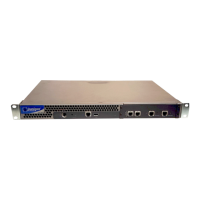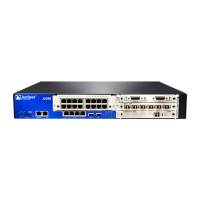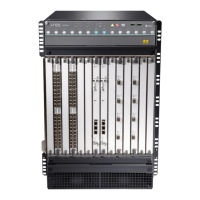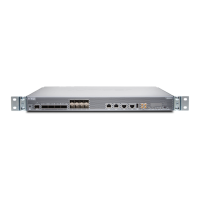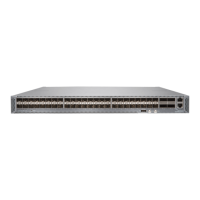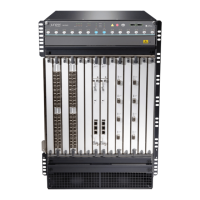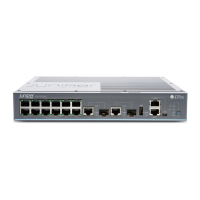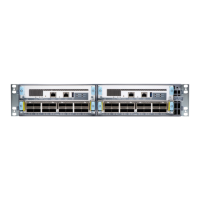vlan-id 100;
}
}
[edit dynamic-profiles]
green_vpls_pw_2 interfaces $junos-interface-ifd-name {
unit $junos-underlying-unit-number {
vlan-tags outer 200 inner 100;
}
}
NOTE: This is not a complete router configuration.
With this configuration, broadcast packets inside frames arriving with VLAN identifier
100 on ge-0/0/1 are normalized to a frame with VLAN identifier 100 (in this case, they
are unchanged). The broadcast packet and frames egressing ge-0/0/2 or ge-0/0/3 are
unchanged as well, according to the interface configuration. Frames egress the VPLS
pseudowire in routing instance green with an outer VLAN tag value of 200 pushed on top
of the normalized value.
Related
Documentation
Dynamic Profiles for Interfaces and Protocols•
• Dynamic Profiles for VPLS Pseudowires on page 63
• Example: Configuring VPLS Pseudowires with Dynamic Profiles—Complex Solutions
on page 68
Example: Configuring VPLS Pseudowires with Dynamic Profiles—Complex Solutions
Dynamic profiles for VPLS pseudowires can be helpful in a variety of VLAN configurations.
This section explores some of these situations through examples.
NOTE: These examples are not complete router configurations.
All of the examples in this section address the same basic topology. A routing instance
blue uses a trunk bridge to connect different departments in an organization, each with
their own VLANs, at two different sites. The organization uses a BGP-based VPLS with
a virtual switch to accomplish this.
•
Configuration of Routing Instance and Interfaces Without Dynamic Profiles on page 68
•
Configuration of Routing Instance and Interfaces Using Dynamic Profiles on page 69
•
Configuration of Tag Translation Using Dynamic Profiles on page 72
Configuration of Routing Instance and Interfaces Without Dynamic Profiles
The basic configuration of routing instance and interfaces without dynamic profiles
follows:
[edit routing-instance blue]
Copyright © 2012, Juniper Networks, Inc.68
Junos OS 12.1 MX Series 3D Universal Edge Routers Solutions Guide
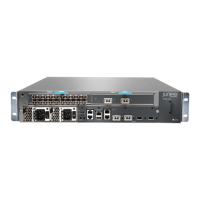
